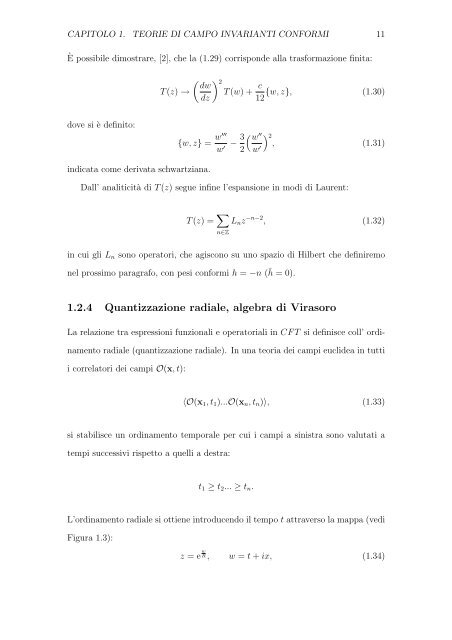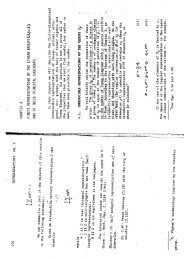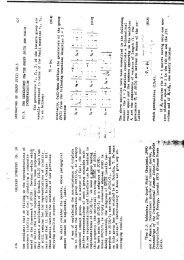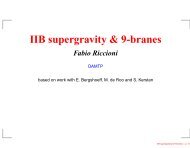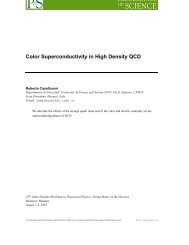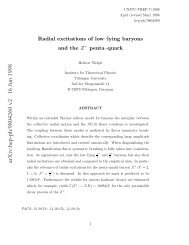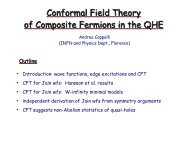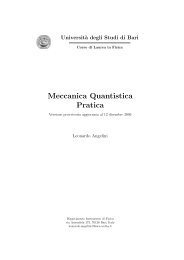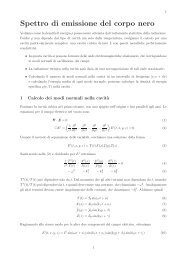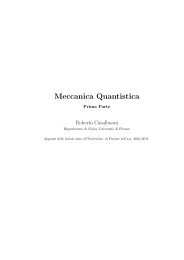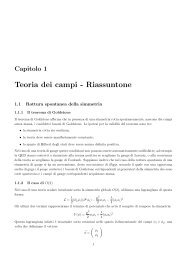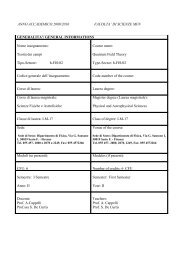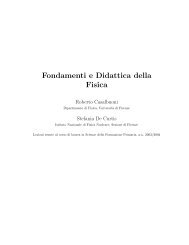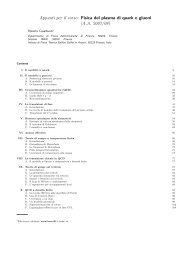entropia di entanglement in teorie invarianti conformi bidimensionali
entropia di entanglement in teorie invarianti conformi bidimensionali
entropia di entanglement in teorie invarianti conformi bidimensionali
Create successful ePaper yourself
Turn your PDF publications into a flip-book with our unique Google optimized e-Paper software.
CAPITOLO 1. TEORIE DI CAMPO INVARIANTI CONFORMI 11<br />
È possibile <strong>di</strong>mostrare, [2], che la (1.29) corrisponde alla trasformazione f<strong>in</strong>ita:<br />
dove si è def<strong>in</strong>ito:<br />
T (z) →<br />
<strong>in</strong><strong>di</strong>cata come derivata schwartziana.<br />
2 dw<br />
T (w) +<br />
dz<br />
c<br />
{w, z}, (1.30)<br />
12<br />
{w, z} = w′′′ 3<br />
−<br />
w ′ 2<br />
w ′′<br />
w ′<br />
2<br />
, (1.31)<br />
Dall’ analiticità <strong>di</strong> T (z) segue <strong>in</strong>f<strong>in</strong>e l’espansione <strong>in</strong> mo<strong>di</strong> <strong>di</strong> Laurent:<br />
T (z) = <br />
Lnz −n−2 , (1.32)<br />
n∈Z<br />
<strong>in</strong> cui gli Ln sono operatori, che agiscono su uno spazio <strong>di</strong> Hilbert che def<strong>in</strong>iremo<br />
nel prossimo paragrafo, con pesi <strong>conformi</strong> h = −n ( ¯ h = 0).<br />
1.2.4 Quantizzazione ra<strong>di</strong>ale, algebra <strong>di</strong> Virasoro<br />
La relazione tra espressioni funzionali e operatoriali <strong>in</strong> CF T si def<strong>in</strong>isce coll’ or<strong>di</strong>-<br />
namento ra<strong>di</strong>ale (quantizzazione ra<strong>di</strong>ale). In una teoria dei campi euclidea <strong>in</strong> tutti<br />
i correlatori dei campi O(x, t):<br />
〈O(x1, t1)...O(xn, tn)〉, (1.33)<br />
si stabilisce un or<strong>di</strong>namento temporale per cui i campi a s<strong>in</strong>istra sono valutati a<br />
tempi successivi rispetto a quelli a destra:<br />
t1 ≥ t2... ≥ tn.<br />
L’or<strong>di</strong>namento ra<strong>di</strong>ale si ottiene <strong>in</strong>troducendo il tempo t attraverso la mappa (ve<strong>di</strong><br />
Figura 1.3):<br />
z = e w<br />
R , w = t + ix, (1.34)


